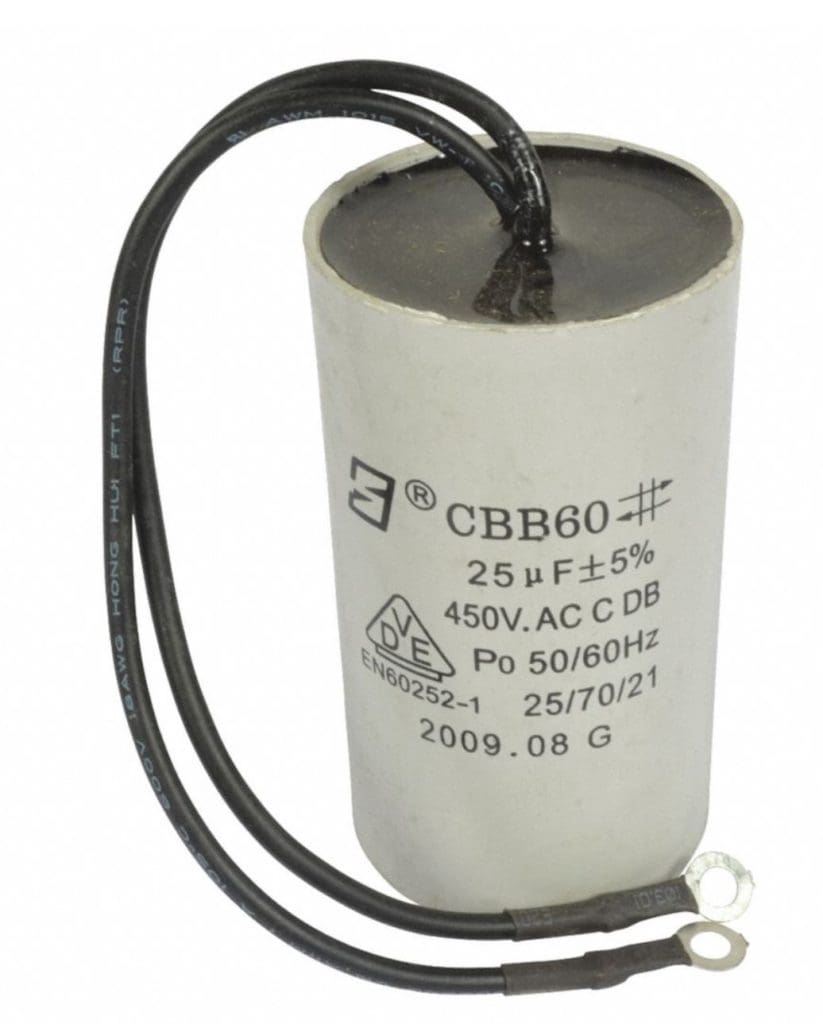Ah, it’s a good day to get work done!
You flip on the compressor and get ready to finish that project.
Except, the compressor isn’t starting. Why did my compressor stop working?
Before you pour coffee on it in an attempt to wake it up (or take a sledgehammer to it), here is a troubleshooting system to help you solve your air compressor problem.
Your top suspects are
A compressor works by pulling atmospheric air in through a small air filter and compressing it with a piston. It then stores that air for future use.
See Related: Industrial Compressors

Disclaimer: This article is for information purposes. Compressors can be deadly to work with and this article does not provide enough training to qualify someone to work on a compressor safely.
1. Check The Electrical System
Electrical problems are the first to rule out.
Is the circuit breaker tripped for the outlet that the compressor is plugged into? While most compressors are under 15 amps, a hard-to-start compressor can flip the breaker.
After ensuring that the breaker is on (or that there is not a blown fuse in older houses), plug another tool into the wall socket and make sure there is power at the outlet.
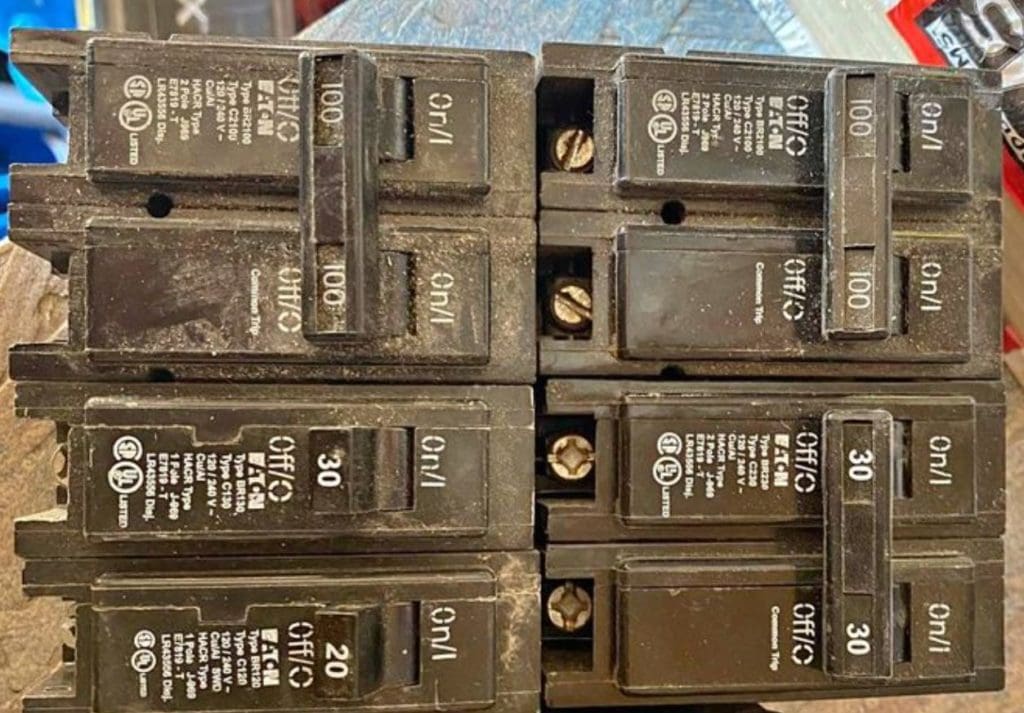
Also, if there is a GFCI outlet in the room, check that it isn’t tripped. It’s easy to be on a GFCI circuit and not realize it.
Then, check your extension cord. No, you really shouldn’t be using an extension cord since it can shorten the life of your compressor by supplying too few amps. But most of us use extension cords, so test it for power, next.
Once you’ve confirmed that there is power, unplug your compressor (so you don’t get electrocuted in the next steps) and start looking at more serious problems.
I’ve never seen this be the problem, but, theoretically, the power switch could be bad.
2. Compressor Won’t Start When Cold
It is possible for it to be too cold for a compressor to start. Modern pancake compressors have a thin layer of factory-installed oil and some Teflon coatings that help them run smoothly. On cold mornings, that may not be enough lubrication.
Turn on your work truck’s heater and move the compressor into the cab so it can warm up.
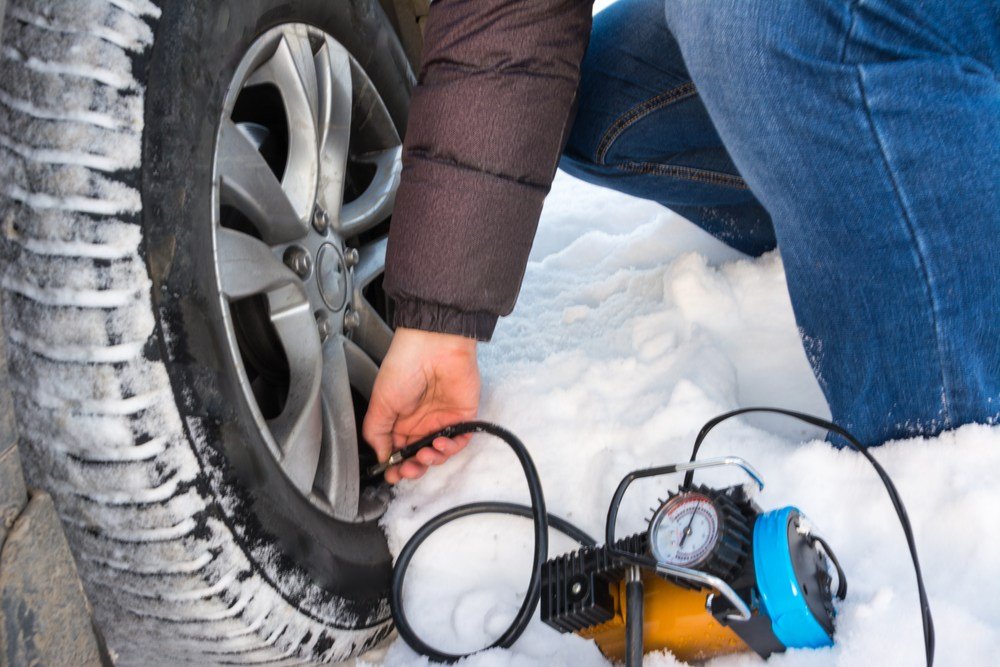
Oil-filled compressors are more robust, but on winter mornings in Wisconsin, you may have the same issue. While this probably goes against the owner’s manual, I’ve had friends switch their oil-filled compressors to 10w or even 5w oil to help it start more easily on cold mornings.
If the compressor keeps blowing a breaker on cold mornings, a lubrication issue is to be suspected.
3. Compressor Won’t Start Under Pressure
Some compressors struggle to start when the air tank is full. If it will start while empty, but struggles to start with some air in the compressor tank, this can point to other issues with the check valve.
(Side note: I’ve found this to be especially true of This is especially true of gasoline-powered compressors where the engine is tied to the compressor)
Opening the drain valve lets you attempt to start the compressor with no pressure in the tank. (Some compressors have a ring you can pull on the safety valve to bleed out the air).
A stuck open check valve will create high pressure on the piston head of the compressor and prevent it from restarting.
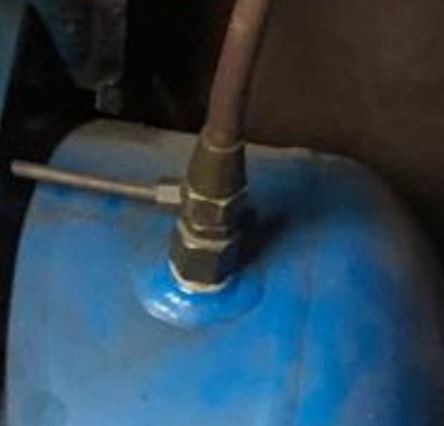
Every compressor has a check valve in the inlet of the tank. This is a one-way valve that opens when the compressor is running to allow air to flow into the tank and then closes to hold the air in the tank for storage.
If the unit has air leaks after it shuts off, you can be sure of a bad check valve. This is also the same if it won’t build air pressure and runs continuously.
Here is a good video on how to diagnose a check valve:
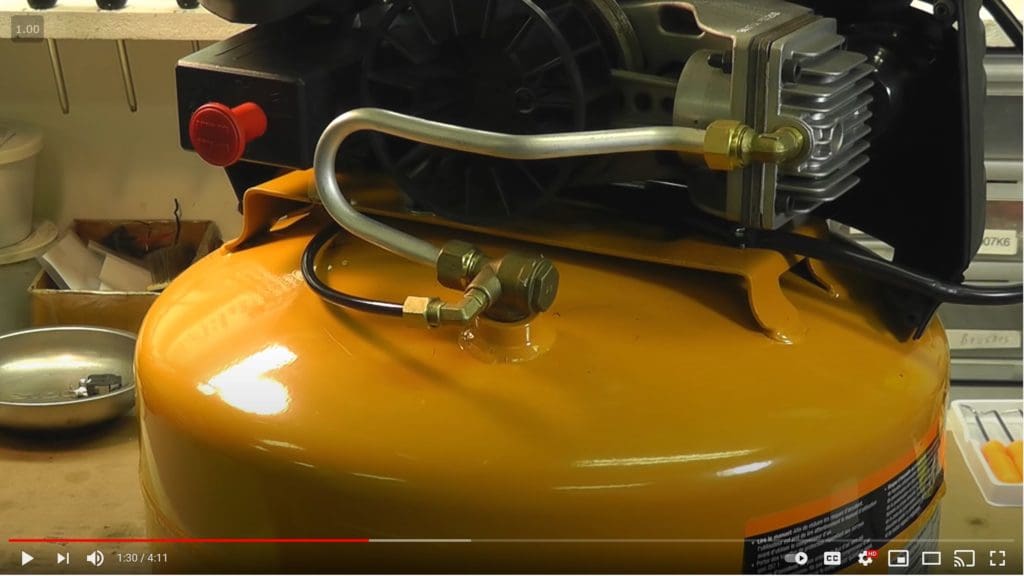
4. Bad Pressure Switch
If the compressor won’t start with an empty tank, it is possible that you are dealing with a bad Compressor pressure switch. The pressure switch monitors when the tank pressure has dropped too low and signals the compressor motor to start.
It also detects pressure build-up and turns the compressor off when the tank is full to prevent tank explosion or damage to the mechanical components.
(These two pressure settings when the compressor turns on or turns off is called the cut in and cut out pressures.)
A bad pressure switch can sometimes be fixed by spraying the contacts out with compressed air (ironic, right?)
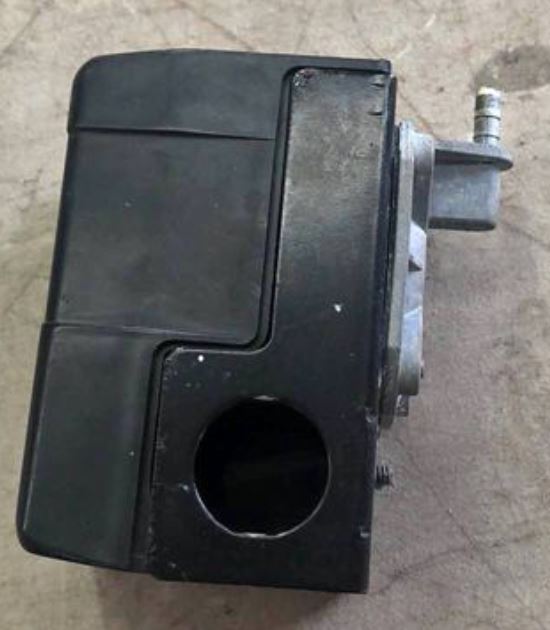
However, if it has failed once, it will likely fail again and you need to plan on replacing it.
The frustrating part about trying to test a pressure switch is that you need a source of air that you can feed into the unloader valve. If you have another compressor and you can create an adapter that safely connects to the unloader valve, you might be able to test the pressure switch for an open circuit with an ohms multimeter.
Some folks suggest testing the pressure switch by draining the tank and listening closely for the switch to “click” once you hit a point of low pressure in the tank. I’m assuming that in most cases the tank will already be empty, making this testing method unusable.
You are probably better off just hopping online and buying a new one.
After replacing the pressure switch, be sure to reset it to factory standards.
5. Bad Capacitor
As with an air conditioner, some of these large compressors have a start capacitor to help the motor get going. Generally, you’ll only find start capacitors on motors that have larger than 30-gallon tanks.
Be careful when working with start capacitors. They can store a deadly charge, even after they have been unplugged.
A Capacitor is generally a small round can that is found along the motor circuit.
If your compressor has a run capacitor, check the connections to make sure they are secure. It’s a known issue with some Habor Freight Compressors that the connections will snap off.
If the connections are good, you can use an HVAC multimeter to test capacitance.
Sometimes a failing capacitor is evident in a motor that is slow to start that then fails and trips.
However, most do not have a capacitor.
5. Replace The Motor
The Motors on these compressors are pretty robust. They take a lot of abuse on the job and last for years.
Generally, one of these other components goes out, first.
Before suspecting the motor, look for a thermal overload switch in the motor circuit. Sometimes it is a large red reset button on the back of the motor.
These switches are designed to protect against overheating during heavy use.
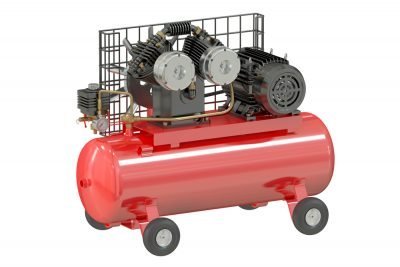
Push on that button to reset it.
There is also the possibility of a line fuse that needs to be replaced, but I have not seen those on small portable air compressors.
If you are confident with a multimeter you can test the circuit for the compressor to verify that it has power. If you have an electrician friend, they can help confirm the diagnosis.
Replacing a motor is a little larger task for the DIY individual. This is often where folks just pitch the compressor and buy a new one. But if you have a larger compressor, it can be worth the investment to replace the motor.
Do Replacement Parts Need To Match The Brand?
It is generally easiest to shop for replacement parts based on the brand name. However, if you have an older compressor, that may be hard to do.
In that case, I recommend searching for connector size and specifications. So the search might look like “1/8″ unloader valve pressure switch 120 PSI”.
If a Dewalt check valve fits your California Air Tools tank, then go for it. Just keep everything within specifications.
 Skip to content
Skip to content

